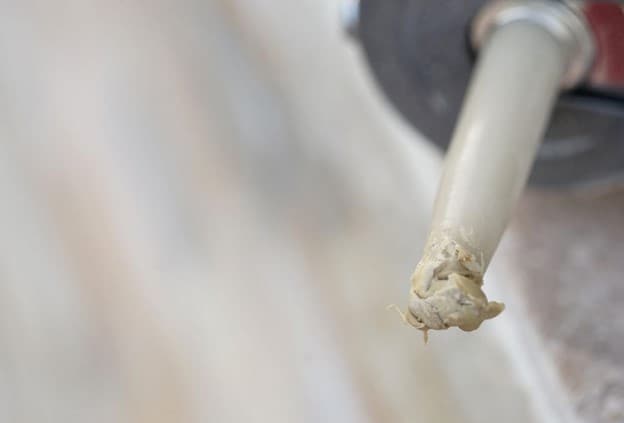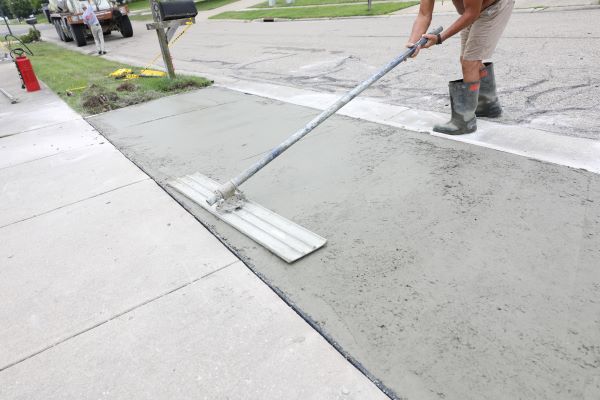
DIY concrete driveway repair can fix unsightly cracks in concrete driveways and walkways. In fact, diy concrete driveway repair can be quick with the right tools and materials. But it can also be a meticulous task that requires some patience.
In this article, you can learn how to extend the life of your concrete and how San Diego Concrete Coating Specialists use the right tools.
DIY Concrete Driveway Repair: Getting Started
Before sealing concrete cracks, level slabs that aren’t even. It’s a process of putting something under the lower slab and gently lifting the level of concrete.
Lifting and leveling each slab depends on the unevenness of your driveway. Such as slabs with one side crack or whole slabs that have sunk at expansion joints. If you are hesitant to do this job yourself, reach out to Dallas Decorative Concrete or a local concrete specialist near you.
Type of Caulk for DIY Concrete Driveway Repair
Once the slabs are even, cracks or expansion joints are filled with flexible caulk to stop water from going under the slab. Stopping water from flowing under your concrete is the best way to prevent driveway sinking and unevenness.
There are two kinds of caulk: self-leveling and non-sag caulk, specifically for joint and crack sealing.
1. Self-Leveling Caulk
Self-leveling caulk works as the name says. It’s thinner and will flow easily between concrete slabs, so it doesn’t need smoothing. It levels naturally, Self-leveling caulk can smooth out cracks and caulk gaps. Before caulking, make sure the area is well-sealed.
2. Non-Sag Caulk
Non-sag caulk is thicker and stays put. This caulk is best for small jobs and can be used to “dam” cracks before filling them with caulk.
Thicker caulk requires smoothing after application. Spray the still-wet caulk with soapy water and rub it with your finger. Wear gloves to keep caulk off your skin.

Caulking Instructions for DIY Concrete Driveway Repair
Caulking is an easy-fix alternative for concrete cracks. You don’t have to resurface the whole concrete, but you just need to follow the following steps:
1. Prepare The Surface
Clean expansion joints and cracks before caulking. Make the gap a little bigger or deeper it’s relatively small. After that, remove dust and other particles. Use the following tools for this step:
● Chisel
A chisel is a tool to remove old grout or concrete and sculpt a stone. When laying tile or brick, chisels can make cuts and lines in concrete. Make sure the chisel you choose is the right size and shape for the job.
● Hammer & Drill
You may need specific power tools for concrete repair. Hammers for concrete repair are generally for demolition, and a heavier hammer is necessary to break up big pieces of concrete. At the same time, smaller holes require only drills.
● Air Scrubbers
Air scrubbers get rid of dust and other things in the air. This tool keeps workers safe from concrete or stone flying at them. This tool cleans the air when using chisels or saws. When sanding or grinding concrete, it makes less dust.
2. Place Backer Rod Support
You’ll need support for the crack that is more than 1/2 inch wide and 1 inch deep. The tool you need is called a Backer Rod, and it looks like a mini pool noodle. Before you caulk, buy a roll of backer rod to fill in the spaces between the larger expansion joints. It can save you big bucks because it will reduce the caulk you need to fill the joint.
3. Caulk Gun and Caulk Tubes
You can cut the nozzle of a caulk tube to make beads of any size. Use three dots (or stripes) of caulk for cracks at least 1″ wide: one on each side and one in the middle. This keeps enough product in the joint and makes it easier to tool.
To do this, you need a caulk gun. A standard sized caulking gun will fit the standard-sized caulk tubes available at home centers, hardware stores, and Amazon.com.
4. Smooth, and Let It Set
If you’re using non-sag caulk, smoothen it out. Then after curing, slightly recess the slab for best elasticity and durability. To achieve this, you need the following:
● Trowel or Spray Bottle
Putting soapy water in a spray bottle can help smoothen the caulk. Especially important if you use non-sag caulk, and towels can do the trick.
● Level
Ensure stabilization using a level tool. It ensures a professional finish and can also check a surface’s slope.

DIY Concrete Driveway Repair: Final Thoughts
Leveled concrete slabs are crucial before fixing any cracks. To move concrete, you need special tools and skills. That’s why for big DIY concrete driveway repair jobs, hiring experts may be best idea.



This article is informative and helpful for those looking to tackle minor concrete driveway repairs on their own.But it’s important to note that significant damage to a concrete driveway may require professional attention, and homeowners should consider hiring a contractor to ensure the repair work is done correctly.
Great tips for DIY concrete repair!